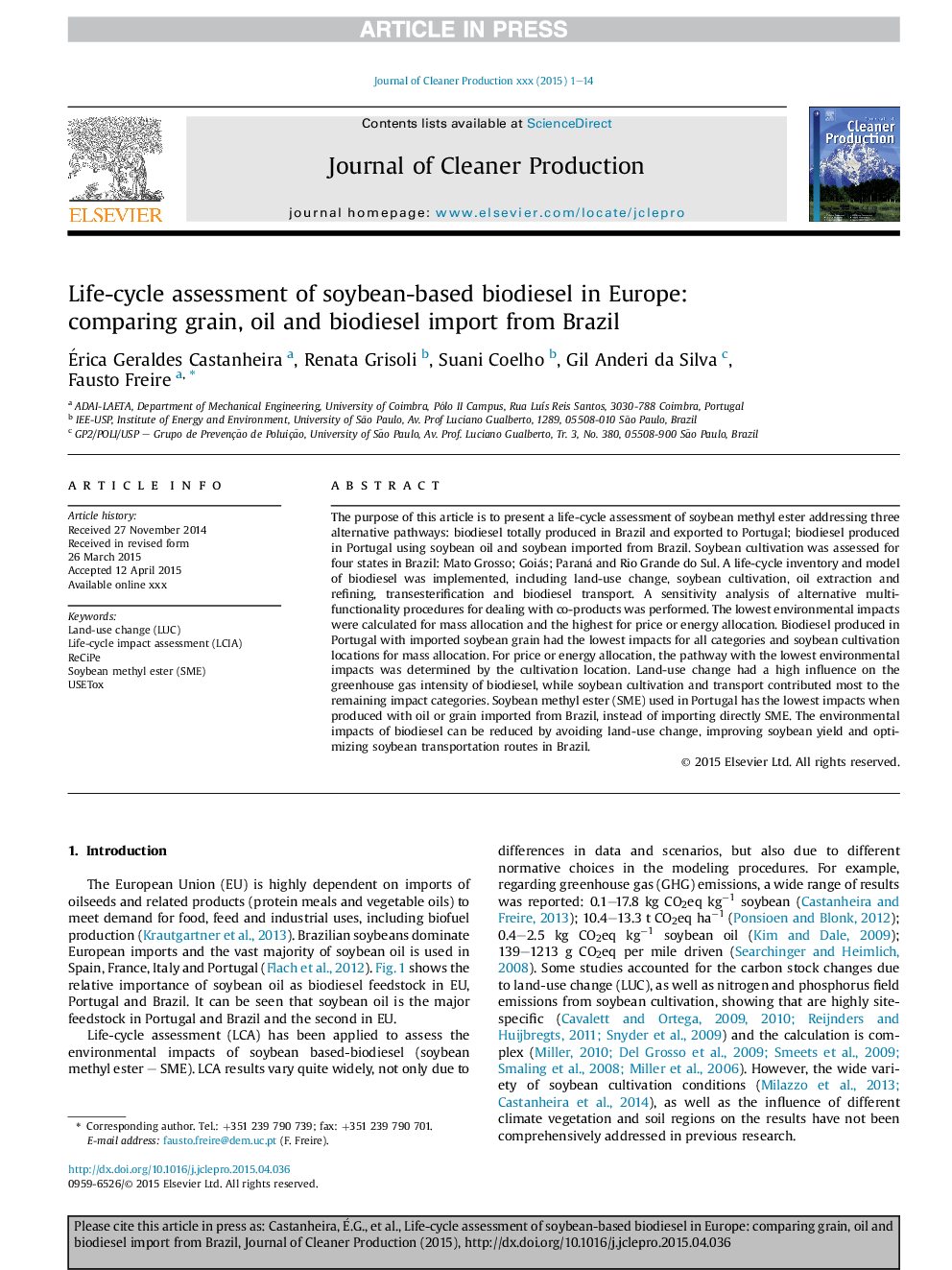| Article ID | Journal | Published Year | Pages | File Type |
|---|---|---|---|---|
| 8103789 | Journal of Cleaner Production | 2015 | 14 Pages |
Abstract
The purpose of this article is to present a life-cycle assessment of soybean methyl ester addressing three alternative pathways: biodiesel totally produced in Brazil and exported to Portugal; biodiesel produced in Portugal using soybean oil and soybean imported from Brazil. Soybean cultivation was assessed for four states in Brazil: Mato Grosso; Goiás; Paraná and Rio Grande do Sul. A life-cycle inventory and model of biodiesel was implemented, including land-use change, soybean cultivation, oil extraction and refining, transesterification and biodiesel transport. A sensitivity analysis of alternative multifunctionality procedures for dealing with co-products was performed. The lowest environmental impacts were calculated for mass allocation and the highest for price or energy allocation. Biodiesel produced in Portugal with imported soybean grain had the lowest impacts for all categories and soybean cultivation locations for mass allocation. For price or energy allocation, the pathway with the lowest environmental impacts was determined by the cultivation location. Land-use change had a high influence on the greenhouse gas intensity of biodiesel, while soybean cultivation and transport contributed most to the remaining impact categories. Soybean methyl ester (SME) used in Portugal has the lowest impacts when produced with oil or grain imported from Brazil, instead of importing directly SME. The environmental impacts of biodiesel can be reduced by avoiding land-use change, improving soybean yield and optimizing soybean transportation routes in Brazil.
Related Topics
Physical Sciences and Engineering
Energy
Renewable Energy, Sustainability and the Environment
Authors
Ãrica Geraldes Castanheira, Renata Grisoli, Suani Coelho, Gil Anderi da Silva, Fausto Freire,
